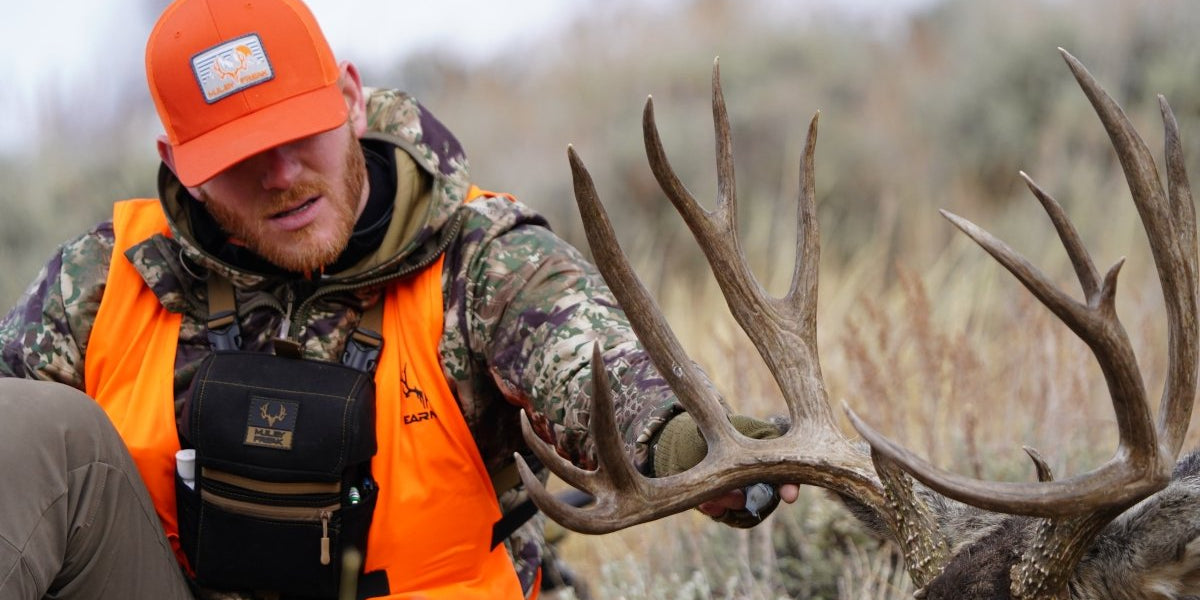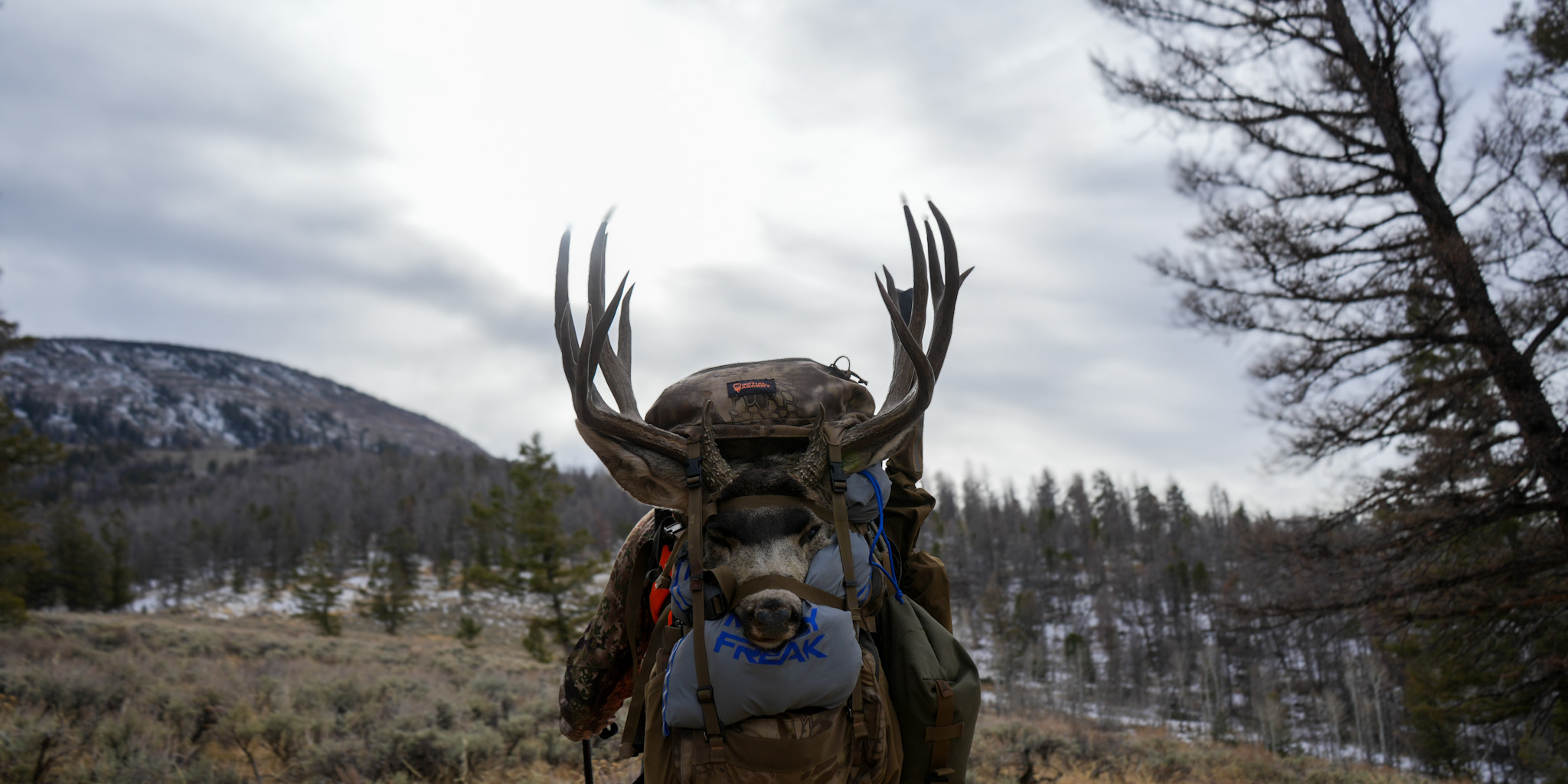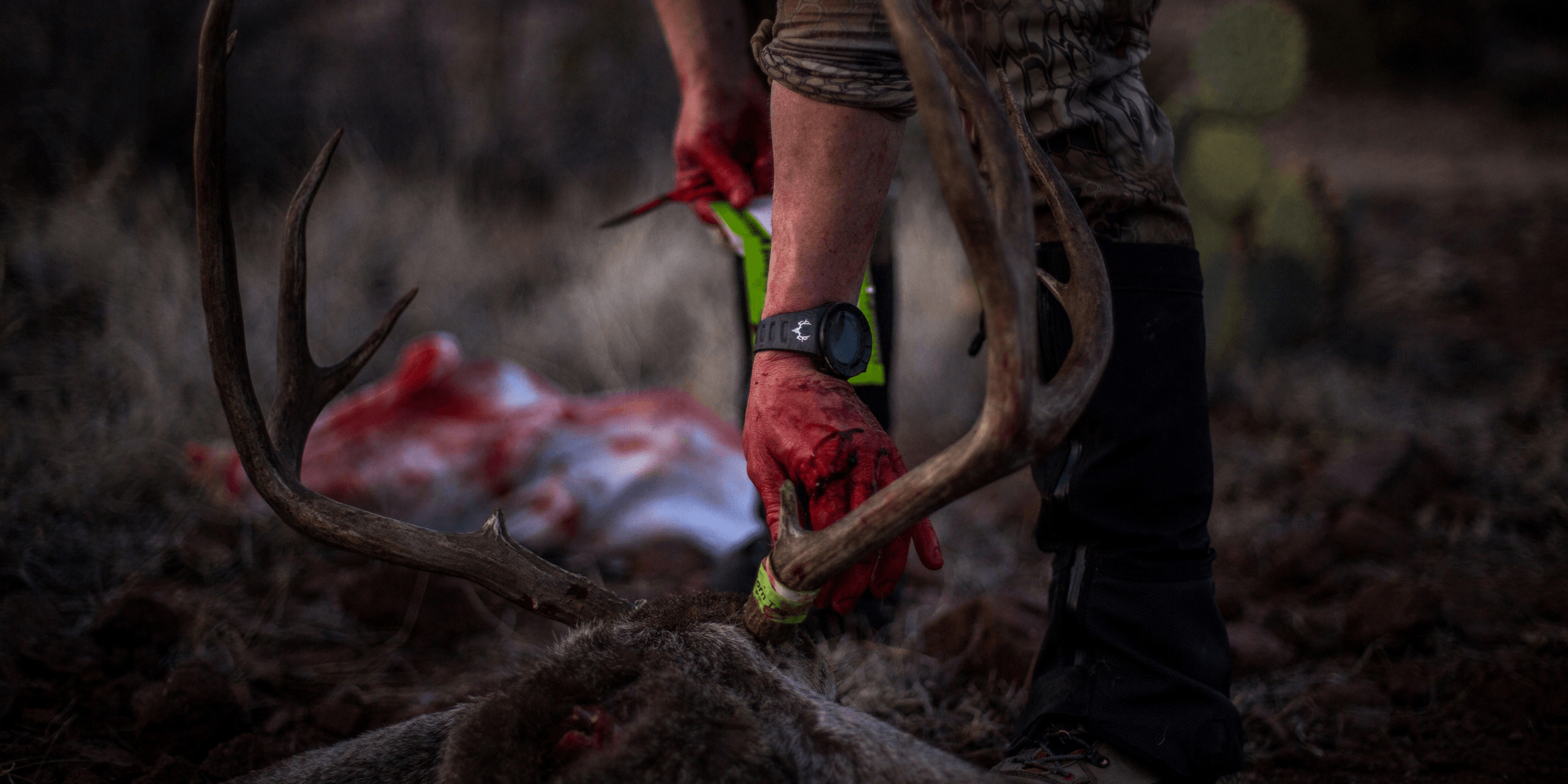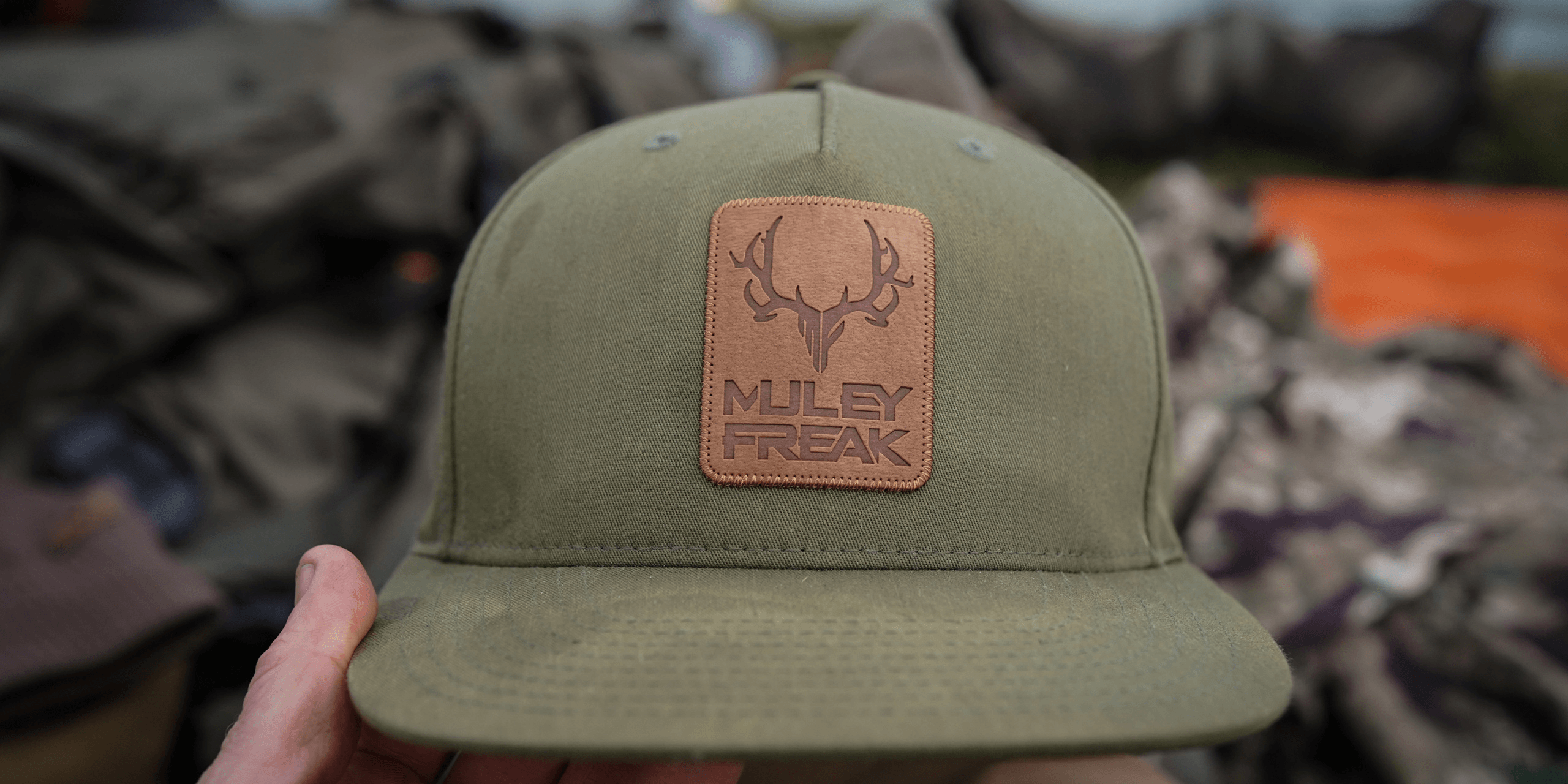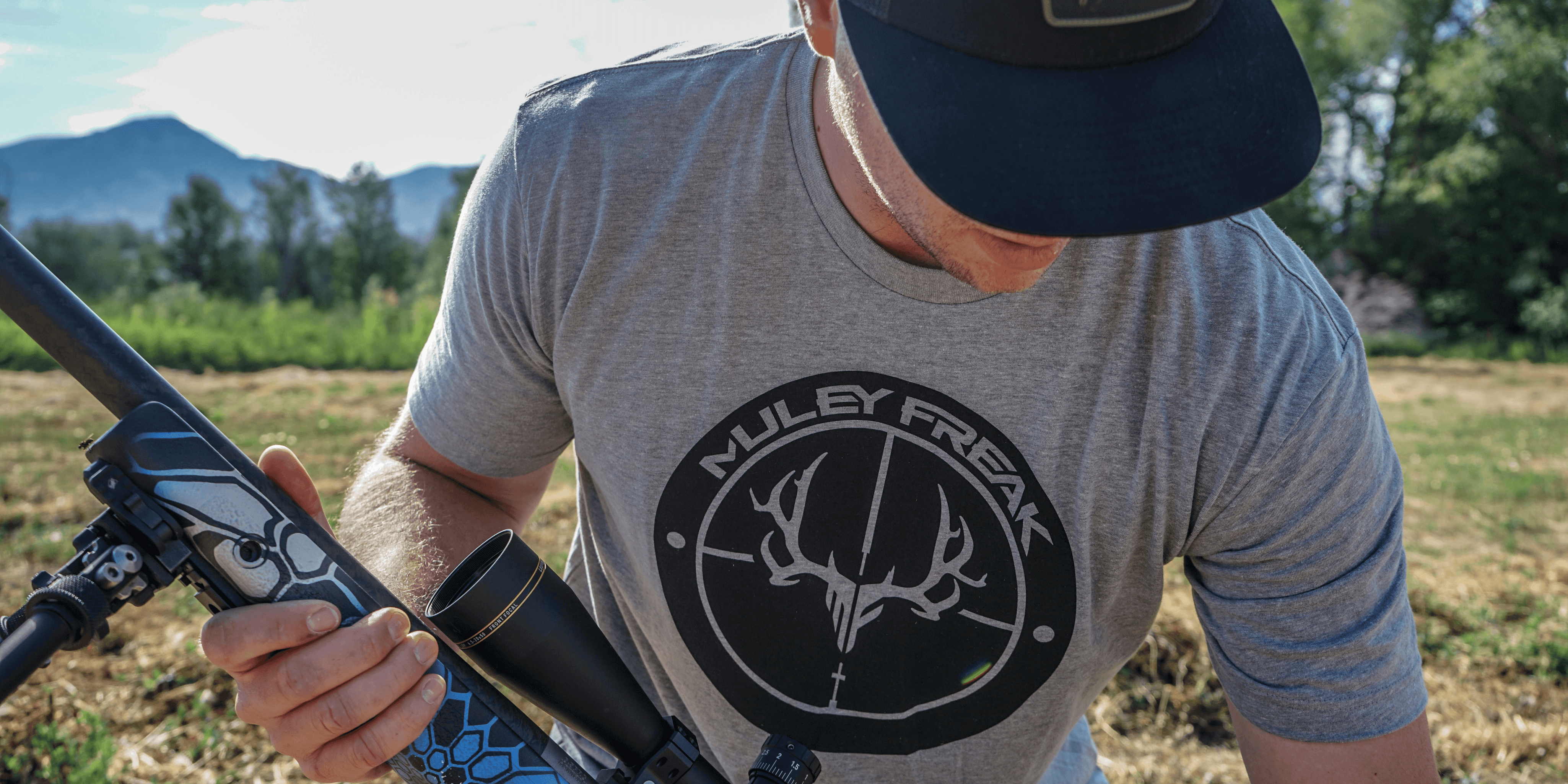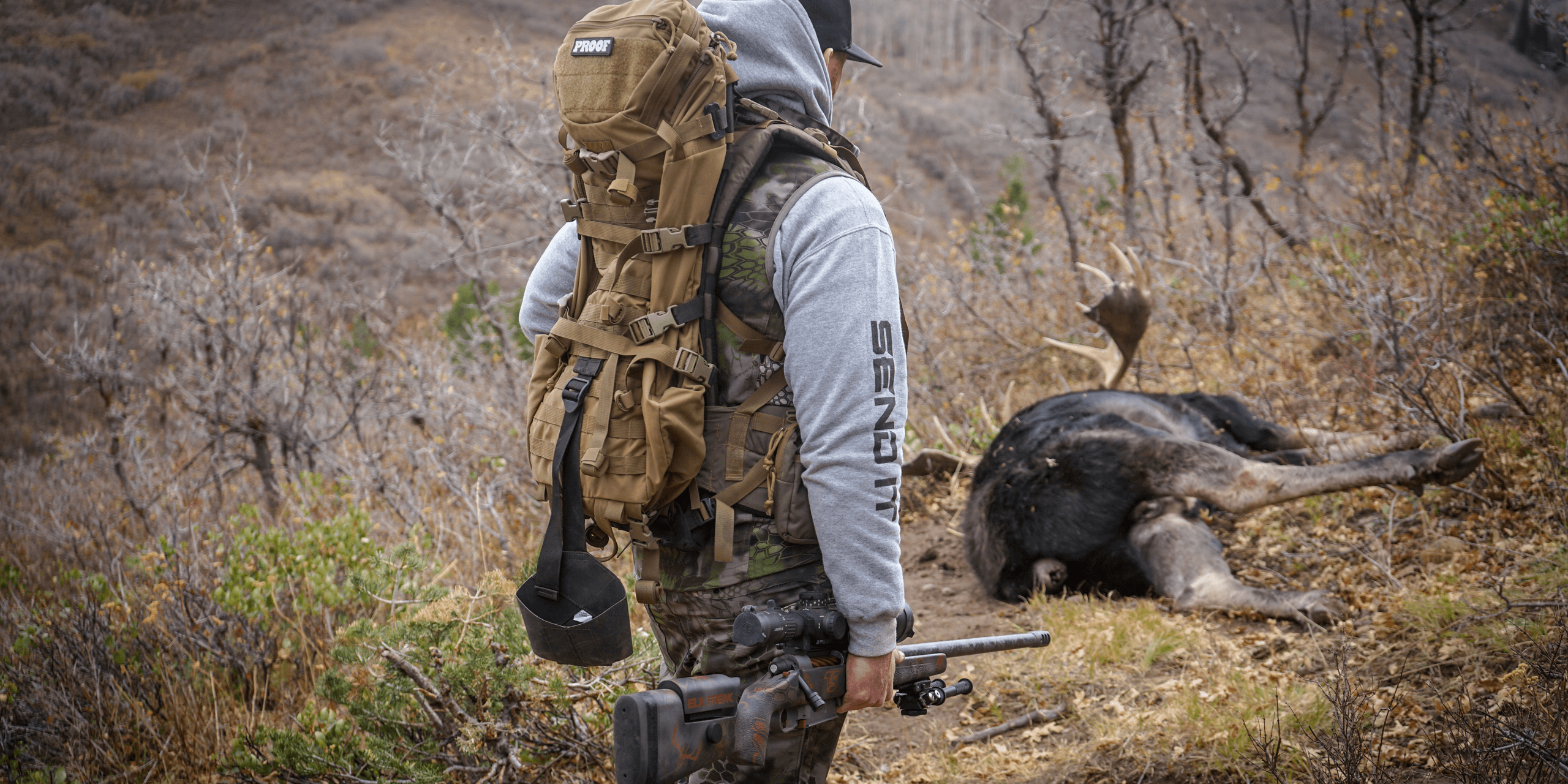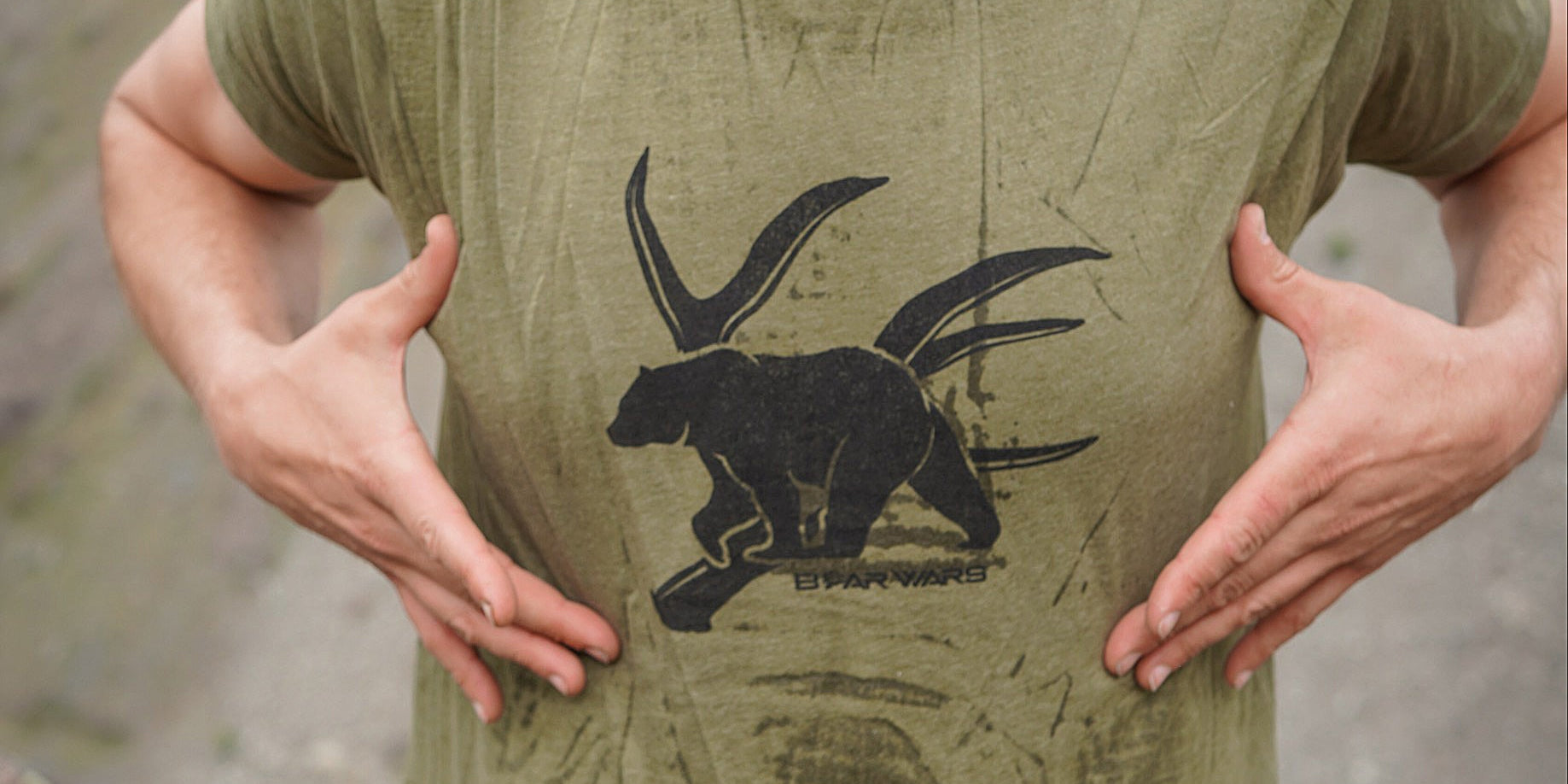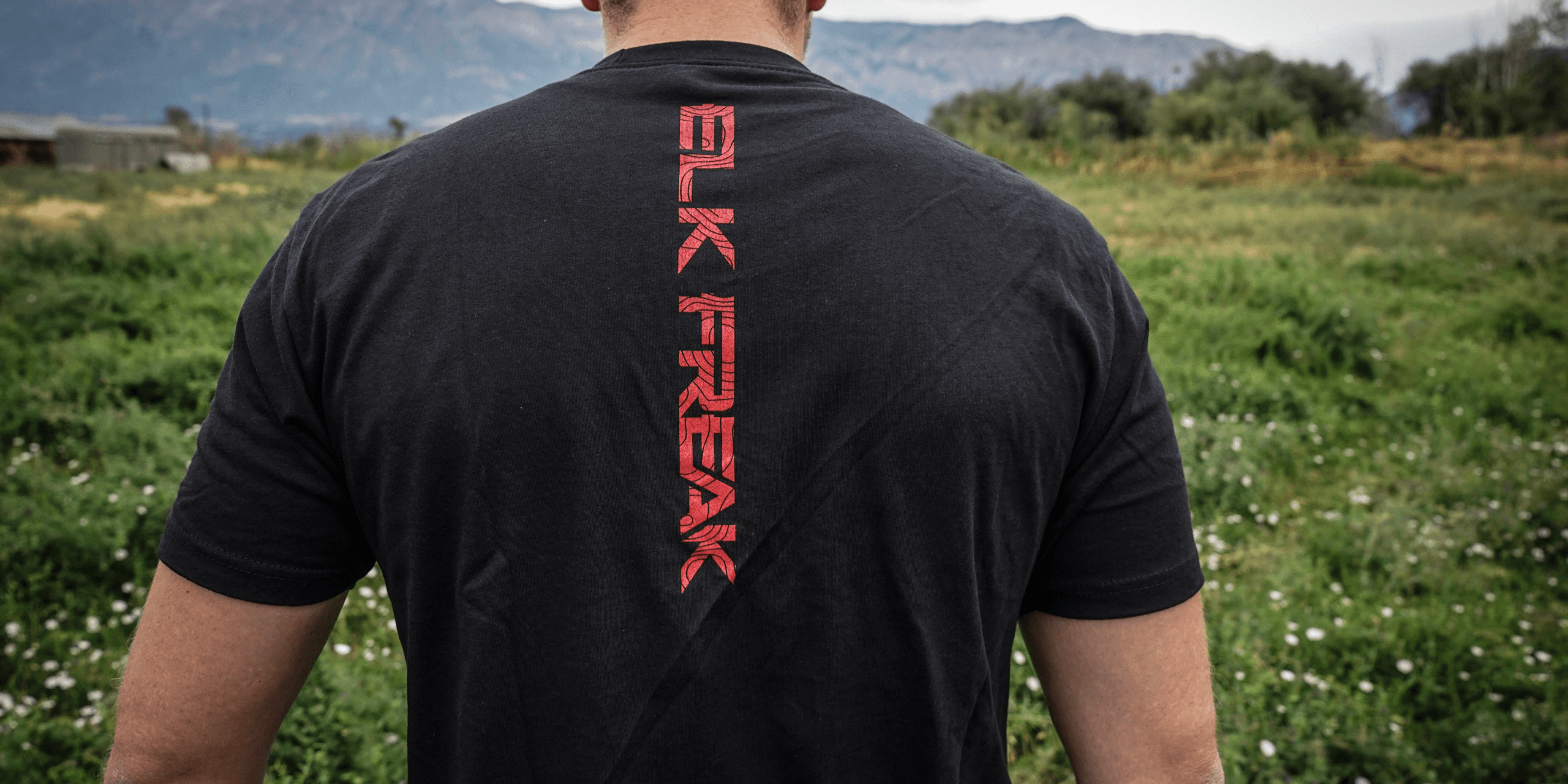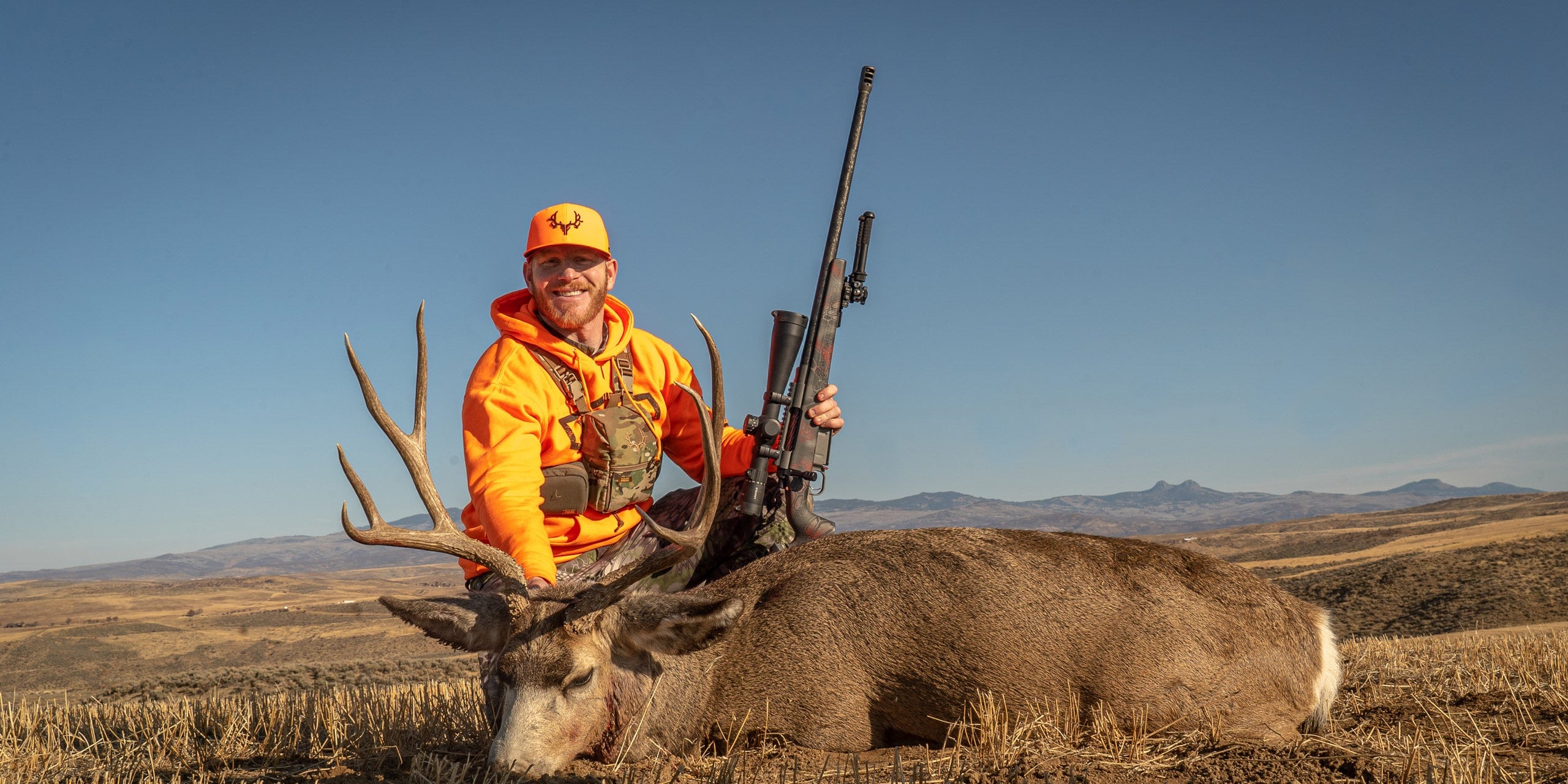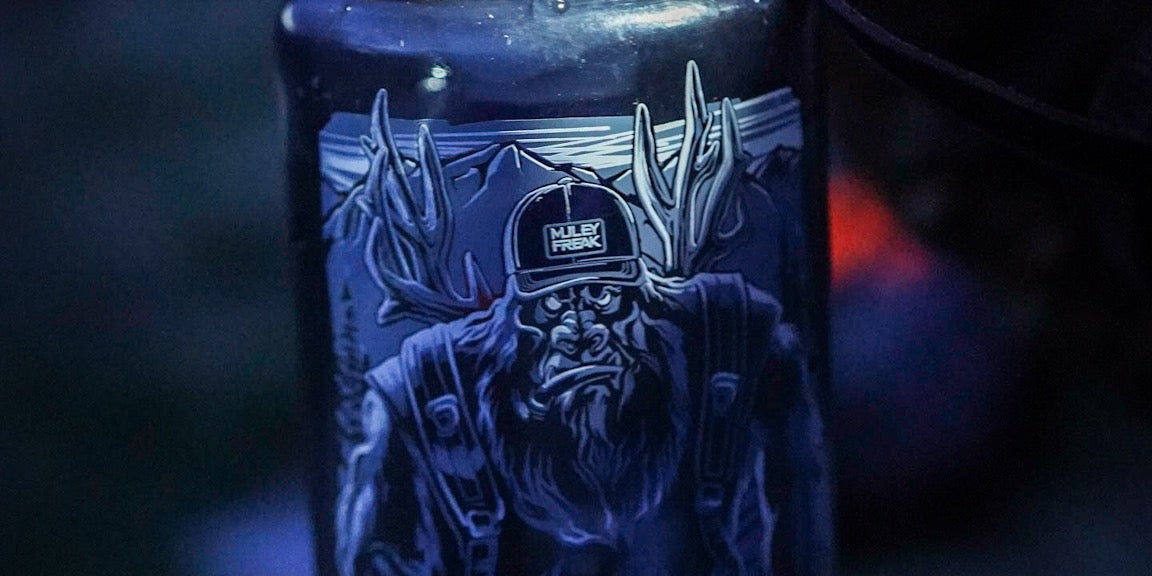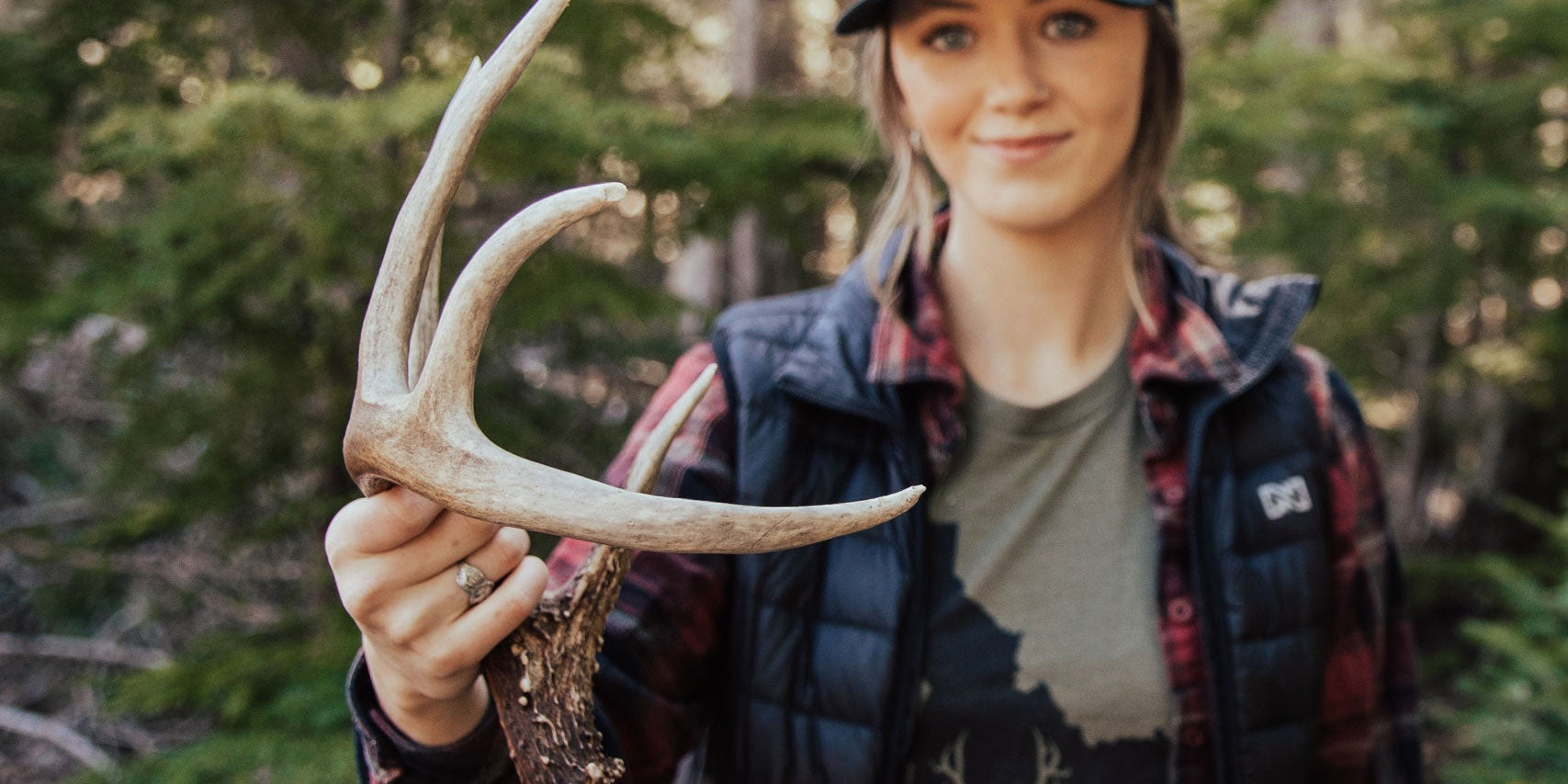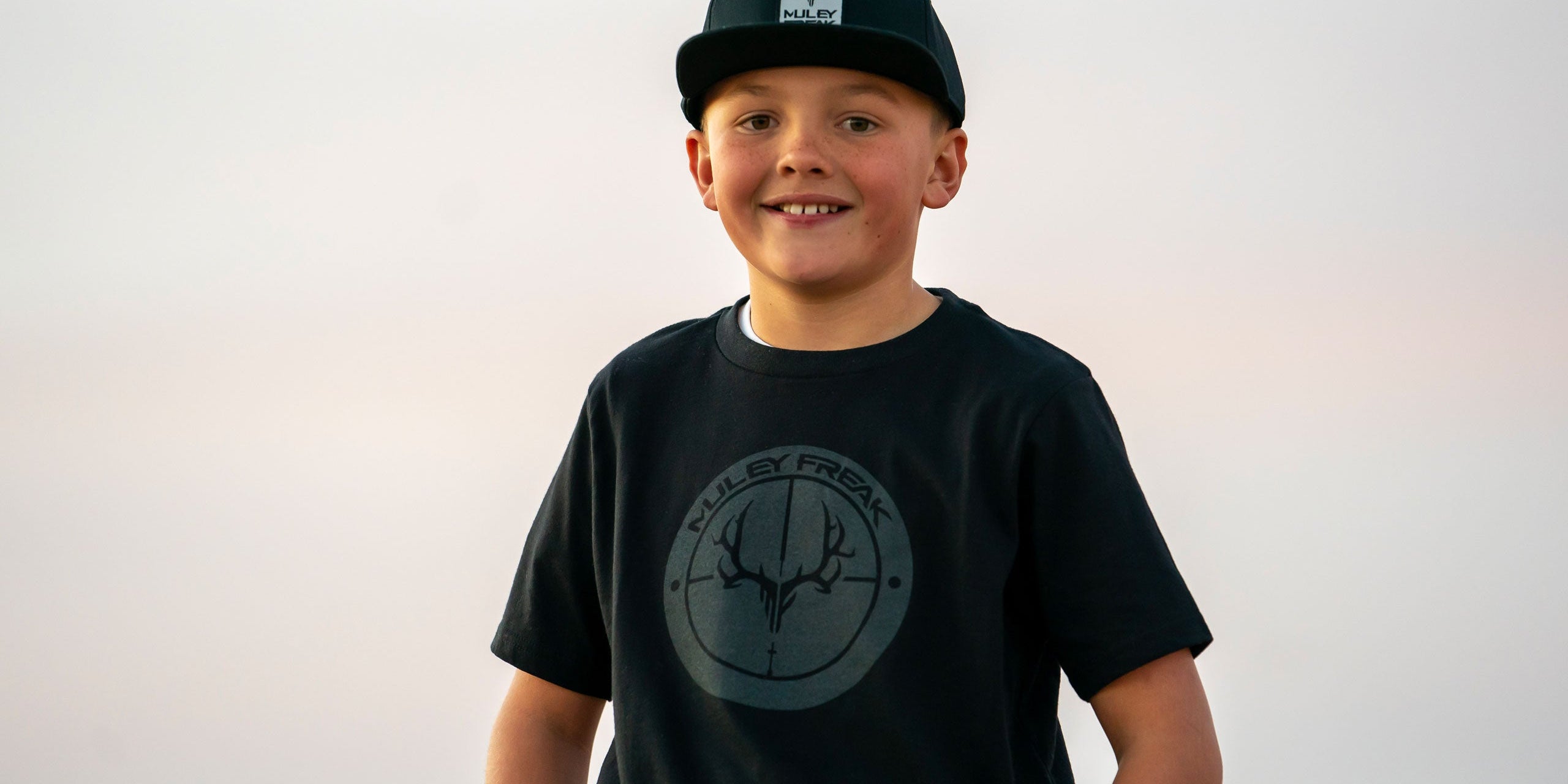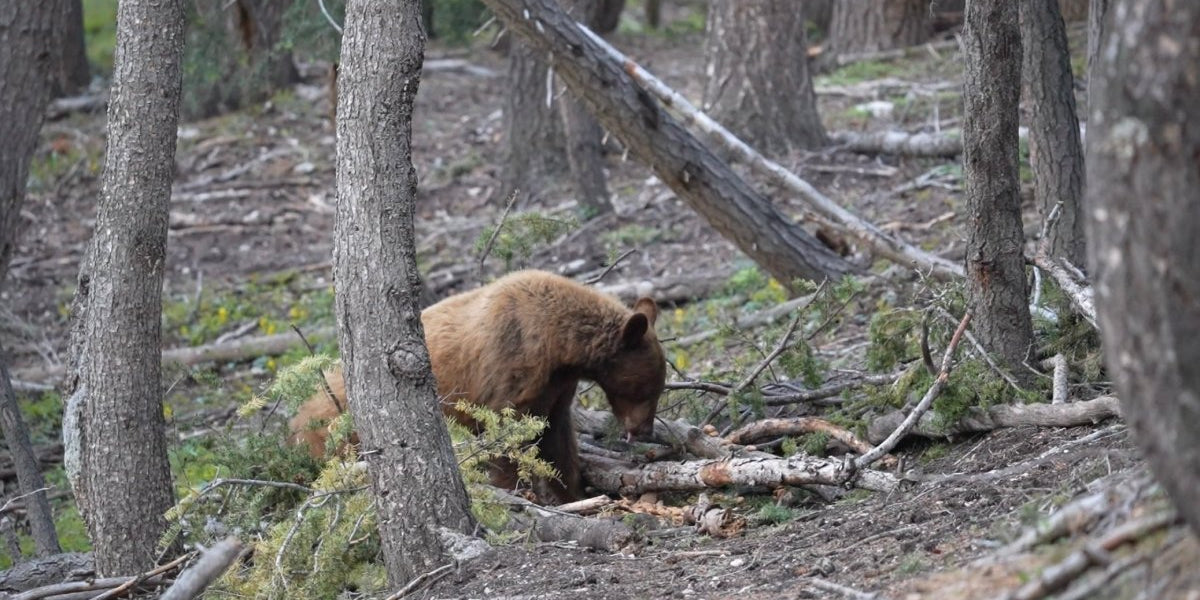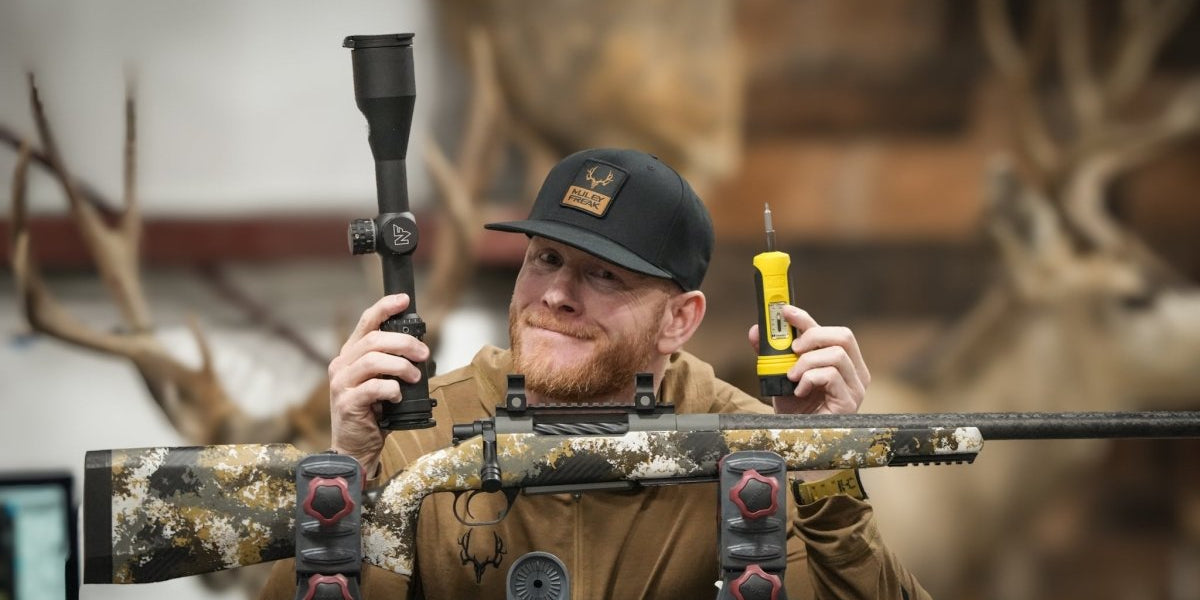11 Spring Bear Hunting Tips

The Beginning
Ursus Americanus; otherwise, known as the American black bear. These omnivores’ have an estimated population of 339,00 - 465,000 across the entire US according to the Pacific Forest Trust.
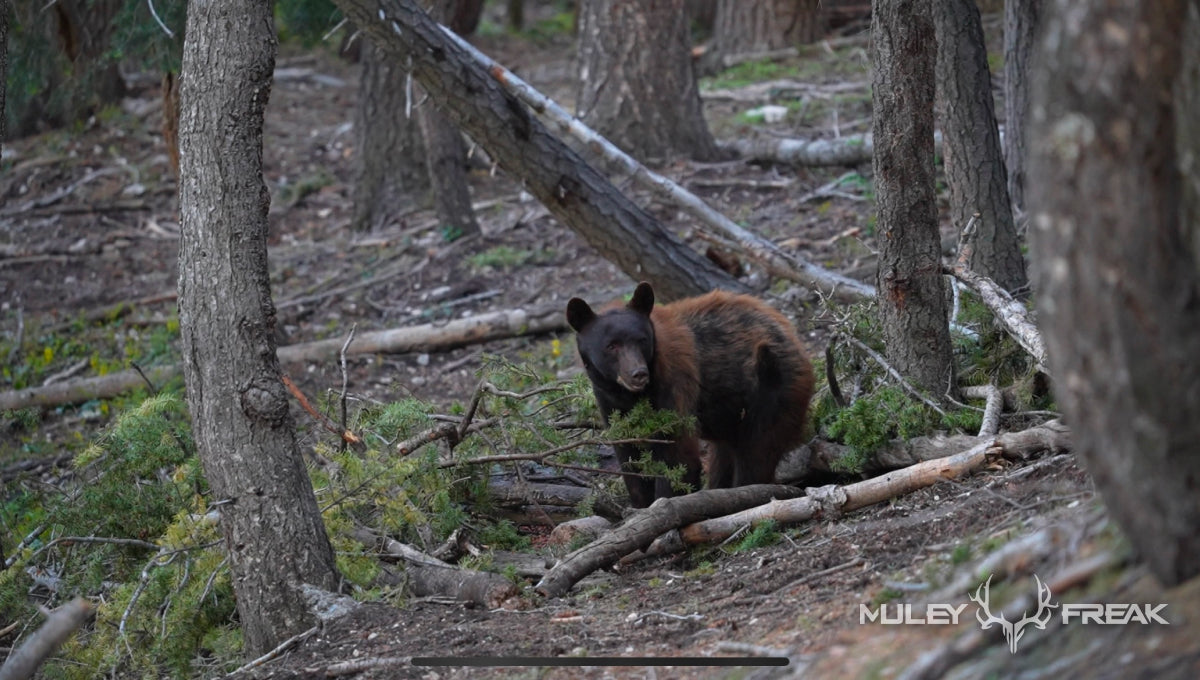
Historically these critters have occupied the majority of North America’s forested regions and Native Americans considered them a symbol of wisdom, resilience, and healing.
These bears, though called “black bears”, come in many different sizes and color combinations. There’s chocolate, cinnamon, blonde, brown, and of course, black.
Female black bears can reach weights from 90 - 180 pounds where males can reach weights from 130 - 660 pounds. Just last year a black bear in Carolina was taken by Caleb Henry from Fine Creek, North Carolina that weighed in at 696 pounds.
Females have a gestation period of 7 months and typically give birth in January whilst hibernating. Litter size is between one to six cubs, but it’s typically around two or three.
But as a kid growing up in Northern Utah I was told black bears didn’t exist. And from that time a curiosity brewed. After all, it couldn’t be true, as my great grandfather killed a giant buck and while he was field dressing it stumbled into a black bear and shot it too which of course made the local newspaper.
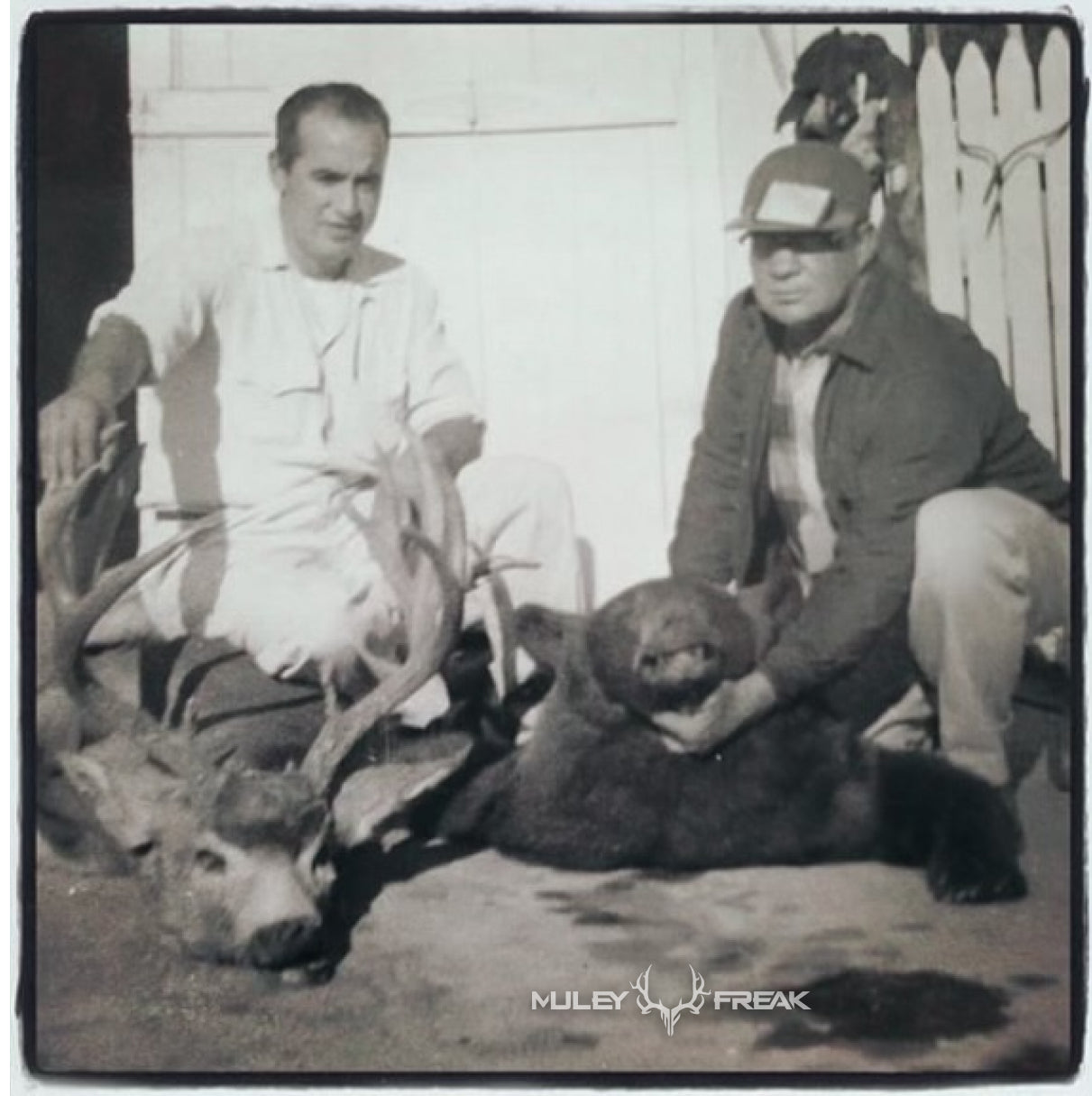
When I embarked on my bear hunting journey I didn’t have a clue of where to go, what to do, or how to do it.
So if you’re like me, you have to start from scratch.
First things first, if you want to hunt a black bear you need to hunt where they are.
Black Bears range from Alaska, most of Canada, the contiguous United States and even down to Northern Mexico, but don’t shoot one down there as you’ll end up in Mexican prison!
Because of their versatile diets they can live in a variety of habitats.
I cut my teeth in New Brunswick on a guided archery bait hunt and since then I’ve spot n’ stalk-DIY hunted them all over the US learning more about black bears and their habits.
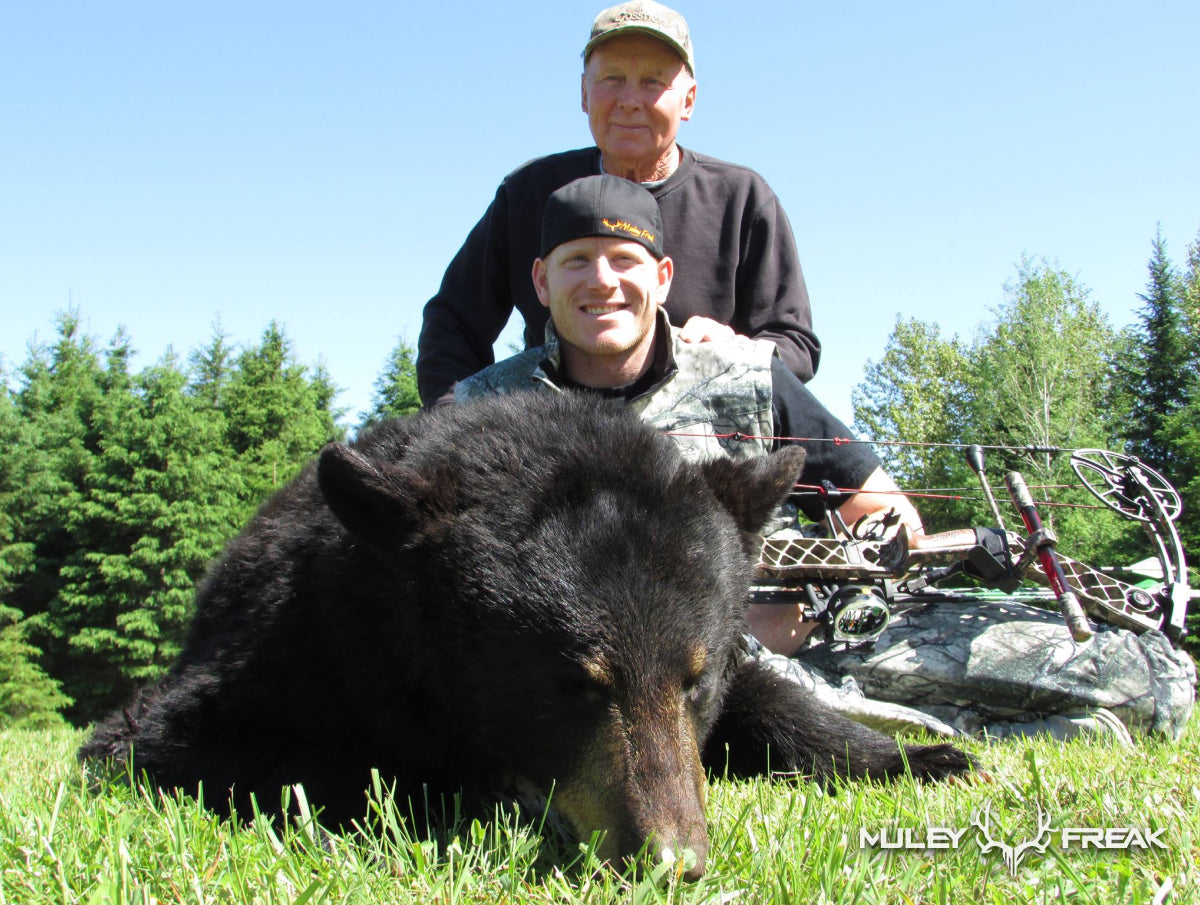
With the help of good friends - we’ve laid some true giants to rest.
I’ve had face to face encounters, dodged rattlesnakes, and also endured extreme weather in my pursuits, but through it all I’ve learned some important tips and tricks that will hopefully make you a more successful bear hunter.
Tip #11: Marksmanship
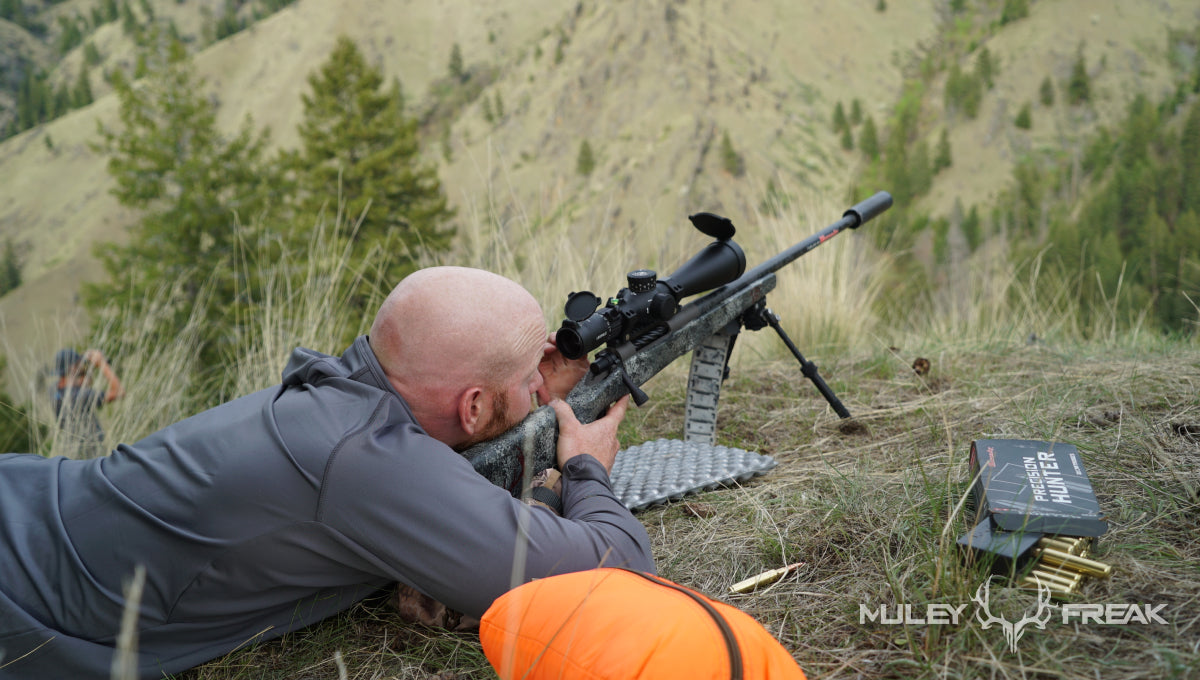
I’m not suggesting you should shoot at an animal as far back as you can as everyone’s effective range is different, but oftentimes these backcountry shot scenarios are 500 yards plus! The country is big, it is steep, and the shot angels are difficult! Take for example this beautiful bear that I shot at 1008 Yards!
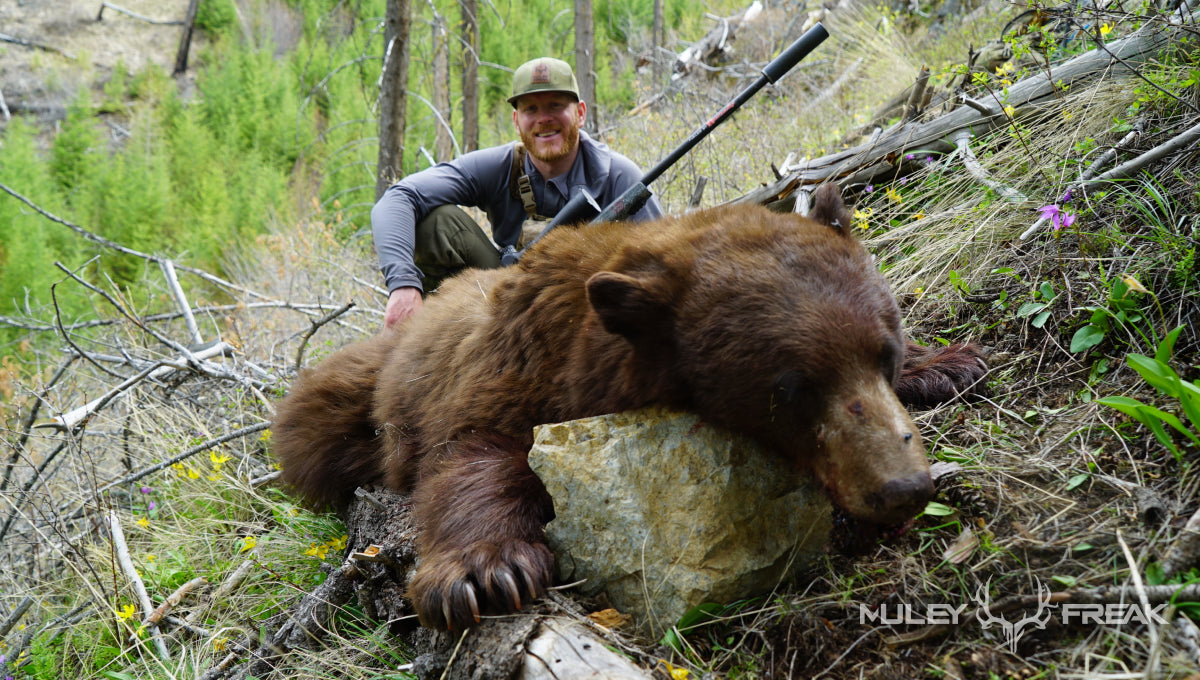
On this particular shot sequence I was able to lay prone and get comfortable behind my 300 PRC deep in the backcountry. The bear was located across a giant canyon in a place I was not able to get any closer to. When everyone was set and ready I sent a 212 grain Hornady ELD-X down range and hammered this giant color phase black bear.
Tip #10: Get Physically Fit
One thing I’ve learned is that if you want to find big bears you have to go where most people can’t or aren’t willing to go. Being in tip top shape and physically fit is crucial and will stack the odds more in your favor. Find a program like MTN Tough Fitness (use code MULEYFREAK for 6 weeks free) that will elevate your fitness and fortify your mind. You have to be able to push yourself hard to get into good bear country. Being prepared physically and also mentally can dictate success or failure on the hunt.
Take for example Aaron’s big Backcountry bear. We had been grinding out 3200 vertical feet for the last 3 hours into the middle of BFE, tired and ready for a rest, we finally got to where we would be likely be camping for the next few days; however, right away our friend Taylor spotted a big color phase bear and it was a tank. With no time to rest after that climb the hunt was on! This is the caliber of bear that makes the pain of getting into a spot worth it.
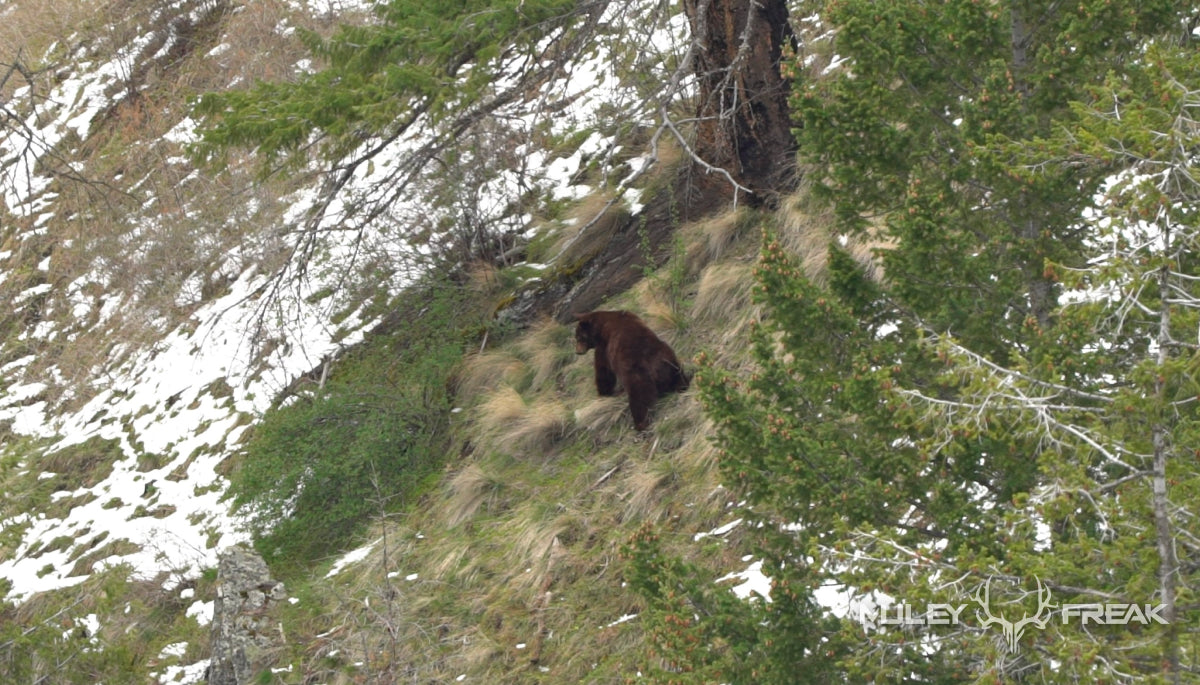
Aaron is also shooting a 300 PRC with a Hornady 212 grain ELD-X. The bear was giving him a slightly quartering-away shot - this angle allows the bullet to run all the way up through his vitals; thus, killing him quickly - and that’s exactly what happened. The bear took a couple steps and then barrel rolled down the steep terrain until he hit the bottom. The retrieval was steep, slick, and heavy. Another reason to be in tip top shape!
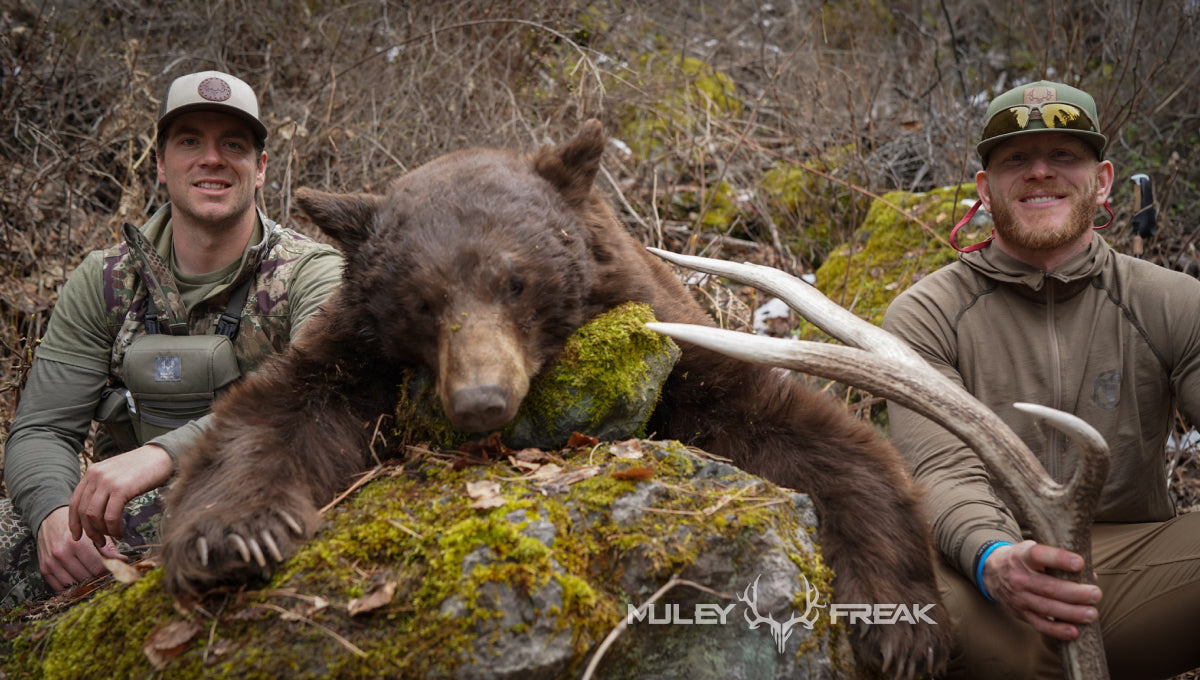
Tip #9: Sharpen Your Tracking Skills

Whether you’re simply trying to find where the bears are at, or looking for a wounded bear, sharpening your tracking skills is vital to a successful hunt. Last year Tyler had a giant bear at 250 yards on the last day of the hunt and set up on his trekking poles to see above some tall brush. Right when he shoots the bear takes a couple steps putting the shot farther back from where Tyler anticipated.
Bears are tough, even with a perfectly placed shot.
Tyler and Aaron ended up tracking this bear for over 8 hours and finally caught up to him in a thick nasty creek bottom. There were times where the blood completely ran out and all Tyler and Aaron had were footprints in the leaves and mud. Wounded bears are not something you want to mess with so going into the thick brush can be dangerous. Making sure you go into the brush with a round chambered is a good idea. Tyler eventually caught up to the bear and hurried and put another round in him to finish him off in the creek!

Tip #8: Be Composed
Whether it’s settling down to shoot after arduous physical exertion, or trying to calm your nerves, staying composed is key to executing a stalk and well-placed shot on a bear.

For example, a few years ago Tyler and company spotted a big black bear moving down to the creek right before sunset. Sun was fading quickly and the bear was about to disappear into the thick brush of the creek bottom. Tyler sprinted across the side hill for over 500 yards to cut the distance between him and the bear and get into a proper shooting range.
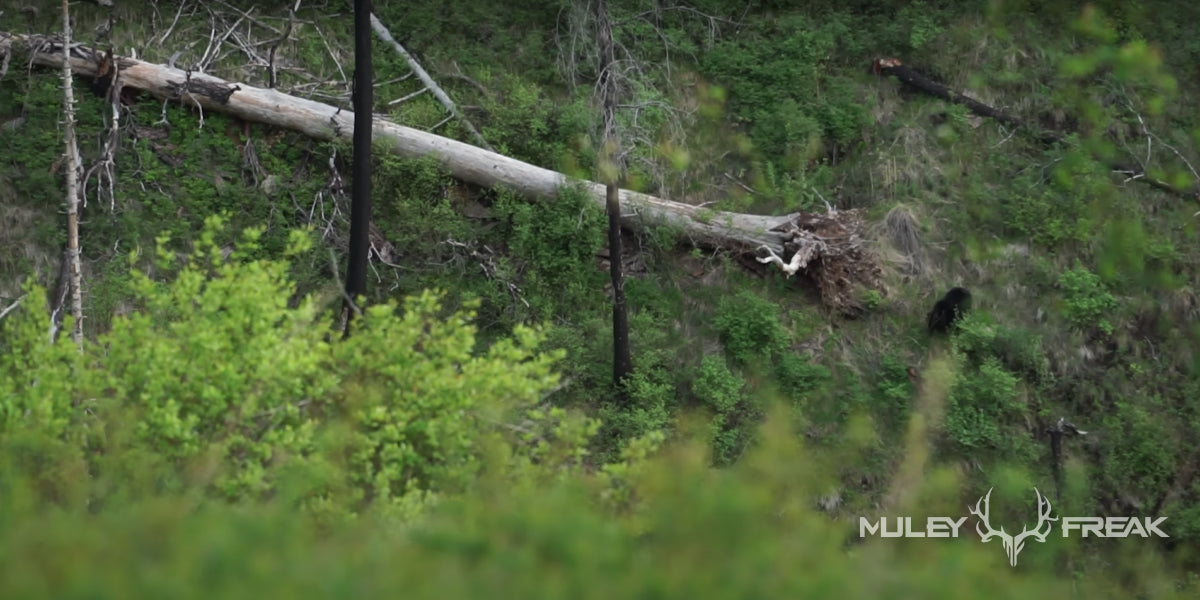
I love the footage of Tyler running down the mountain with a full pack trying to get into position to shoot this bear. Out of breath and with the bear feeding downhill and out of sight, Tyler gained his composure, steadied Aaron’s 300 Win Mag and hammered this bear at 243 yards with a 200 Gr Hornady ELD-X. Again, physical fitness being an important factor in the execution of this shot. He dropped the bear and they recovered him right away.
Tip #7: Try Bear Baiting
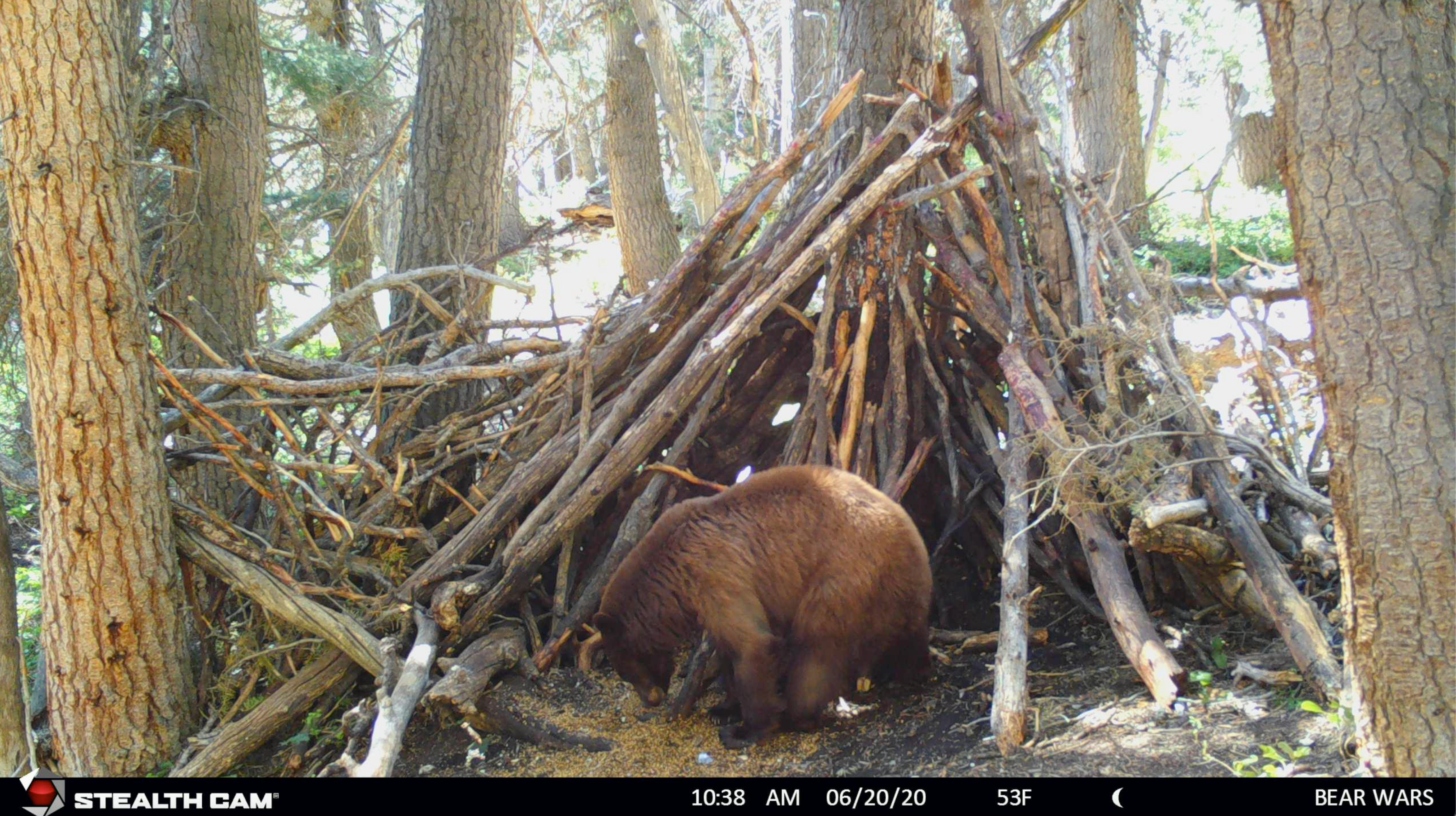
There are a few different ways to hunt bears such as spot and stalk hunting (like we have been speaking about so far), using hounds to locate and tree bears, and also baited bear hunting. Bear bait hunting is a popular way to get started into hunting bears. It’s the act of placing bait down on the ground, or in a barrel, and bringing bears into you.
For example, last year our cousin Clint drew a limited entry baited bear hunt in Utah. Now people have a lot of opinions on baiting bears and there’s a bunch of rules you need to follow to bait them that vary from state to state.. With that being said, in some places baiting bears is the best option because you can get a lot closer and the country can be so thick that spot and stalk just isn’t possible.
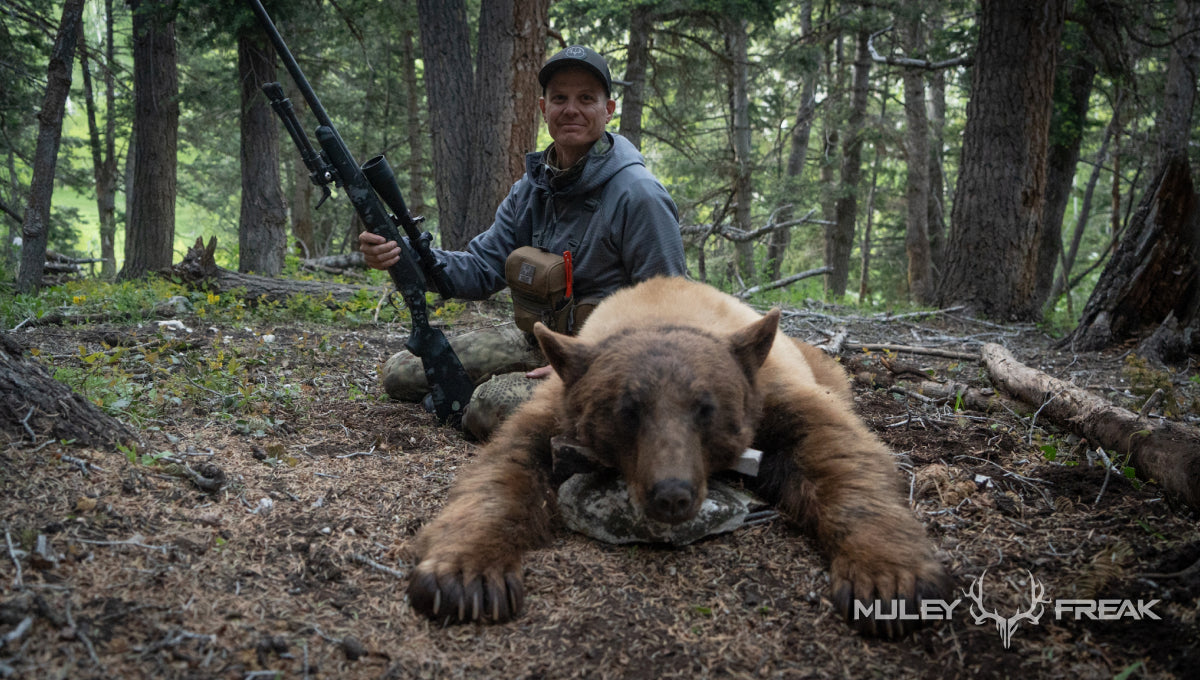
Aaron and Clint spent a lot of time setting up the baits and hiking/packing in food for this moment to finally happen. This cinnamon bear was hungry and after watching him eat for a minute or so he finally stepped out from behind the tree and Clint smoked him with a 162 gr Hornady Hornady ELD-X. You can see the bullet impact 12-ringing the bruin.
Tip #6: Hunt Clear Cuts

Montana is one of my favorite places to hunt black bears. With tons of logging roads that offer clear cuts you can only hope to catch a bear grazing in the open long enough to size him up for maturity and execute a shot.
This was exactly what happened a couple of years ago when hunting with my friend Wyatt. We hiked 3+ miles to the end of a logging road and a giant bruin fed out of the timber. I got prone at 750 yards away with the 300 PRC and sent a 212 gr ELD-X. He dropped and started rolling revealing a beautiful white patch on his chest. We found him expired in the creek and pulling him out wasn’t easy - even with three grown men! Stay in shape!

Tip #5: Learn Positional Shooting
Bonsai Bears is one of our most popular videos, it’s a hunt where we backpack deep into the backcountry where few people ever see. The crew and I prepared many months in advance for this hunt by functionally training and it still seems like our bodies are never quite prepared for it.
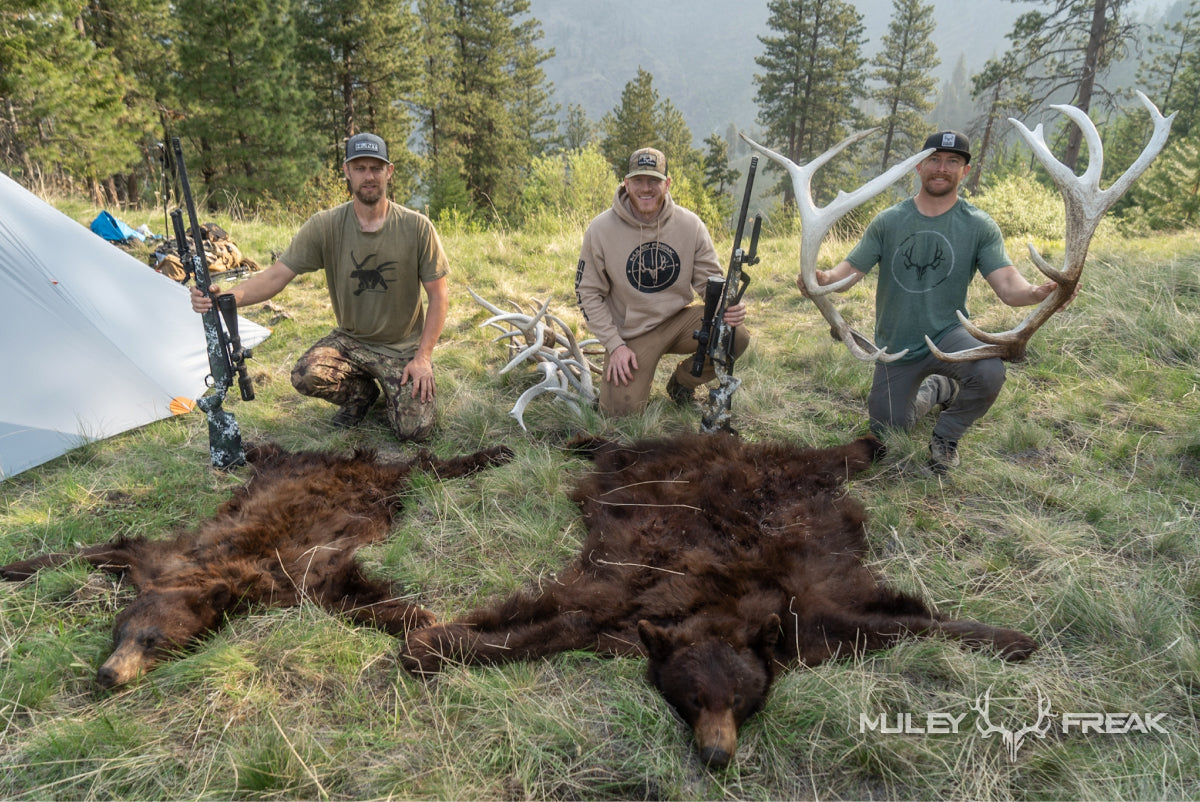
Last season we pushed even further into an area we called “off-limits” because getting in there and shooting and then packing him a critter out seemed impossible. But that is just the type of adventure we seek. We climbed 4,000 feet in vertical just to get into an area that was suitable for a tent and on day 3 found ourselves 650 yards away from a big bear. We waited all day for this bear to present a shot and he finally fed out.

Perched up on a rock with my 7 PRC I had to get creative to build a shooting position to get a shot. Once the bear cleared some brush I sent a 175 grain ELD-X his way hitting the bear hard. He was hurting so I followed up with another shot and he tumbled off a cliff. When we got over to him he was laying by a waterfall - it was beautiful.

Tip #4: Know a Bear’s Anatomy

If you read enough forums, Facebook threads on bear hunting, or talk to bear hunters - you’ll quickly learn that bear’s vitals sit a little differently than a traditional big-game animal. For example, a deer’s lungs are partially covered by its shoulder blade, whereas a bear’s lungs are completely behind and below its shoulder. This means there is more space above a bear’s lung where you can shoot and miss vitals. On a deer, if you aim for the heart you will also likely hit lungs, whereas on a bear if you aim for the heart you might miss everything altogether since the heart sits so low and away from other organs.

Knowing this information, certain standing positions make for better shots. The quartering-away shot is extremely lethal on a bear, it allows the bullet to travel forward and up through the vitals giving you a greater chance at getting the good stuff. This shot position has become one of Aaron’s favorites, here are a couple of bears that Aaron has taken while they were standing quartering away.
Read this in-depth bear anatomy/shot placement article to help you become proficient at shooting bears.
Tip #3: Caliber Selection

You know it's a big bear when you can see his belly dragging on the ground. Big bears are very tough and need a good caliber/bullet combination to bring them down. Tyler’s go-to rifle for years has been the 7mm. One thing I’ve learned is that in this kind of country it’s hard to get close to bears, not only had you better make a great shot, but you better have a caliber and setup with marginal recoil as follow up shots are sometimes required. We also highly recommend the 7PRC as it is a heavy hitter with little recoil.
Here is an absolute giant belly dragger that Tyler shot with a 7mm using a 175 grain Hornady ELD-X - dropping him instantly. He took a couple of rolls down the hill and was dead in seconds.
Tip #2: Identify Food Sources

Most of our bear hunts have taken place in the spring, when bears are right out of their dens and looking for green grass to pass that digestive fecal plug; however, I have done a few hunts that took place in the fall in the same place I’ve been archery hunting elk.
Fall bears are always bigger and fatter and have full coats as they prepare for winter. They are also trying to eat as much as they can to store up those much needed fat reserves. Since I had just shot that elk a couple days prior, we decided to sit across the canyon and see if any bears would discover the carcass. After a few days with no luck, an ancient sow located the carcass and started munching on the elk remains.
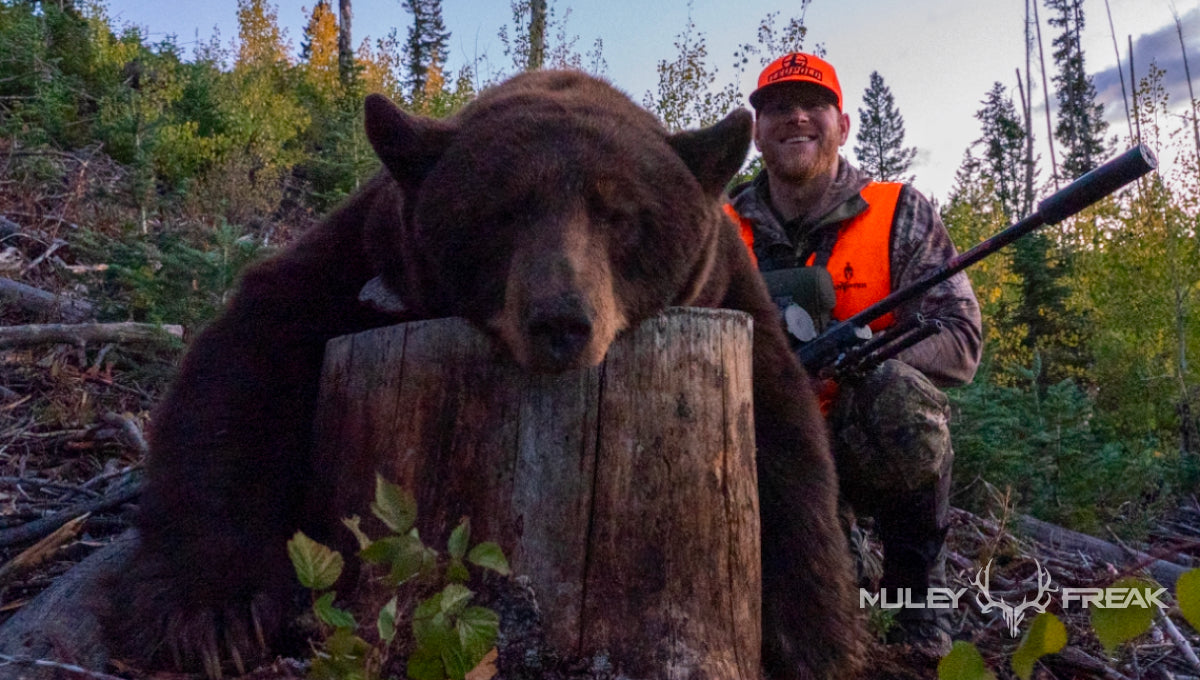
Posted up at 297 yards I elected for the high shoulder shot which in my honest opinion is the most lethal option on these tough animals.
Tip #1: Hunt Logging Roads
One of our most popular bear hunting films is called “Timber Bruin”, and that’s because we hunted for days in thick timber and only saw one bear. We had some crazy weather the night before and had to pull trees out of the road with our new friends. We were getting ready to head home but decided to try one last logging road that we had found on the map. While walking on the logging road I came around the corner and saw a sow only a few yards away and trailing her was a big rutting boar.
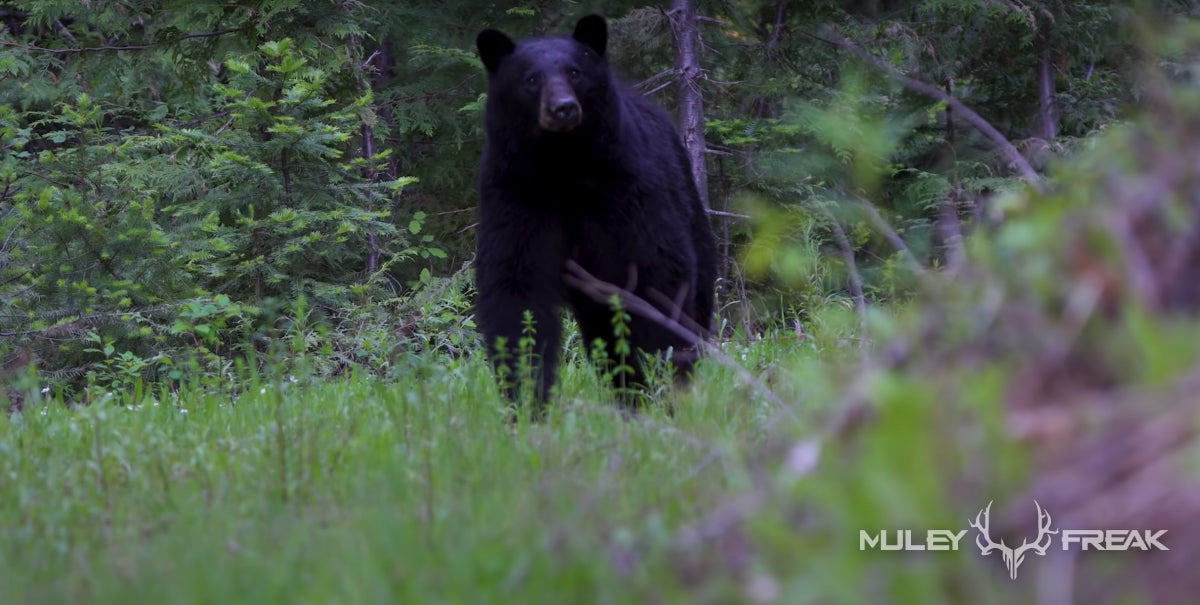
I kept thinking we would run into a bear if we put in the proper work. Additionally, the green grass and flowers were in full bloom; thus, making it irresistible to cruising bears. I felt like it was our best option to tag out as it was one of the few places the sun could penetrate the thick canopy to initiate new growth.
I backed up and grabbed my camera man with excitement and we snuck up to the corner. As the bear rounded the corner and came into focus we locked eyes and he winded me, but right before he could turn I hammered him in the chest at less than 20 yards away on the public logging road.

This bear was operating off of pure adrenaline, he took a 212 gr ELD-X from a 300 PRC at 20 yards and still got back up and was able to roll off the trail. Talk about tough critters!
In Conclusion
Bear hunting is an absolute blast and is a great way to enjoy the first rays of sunshine of the year. While getting started bear hunting may seem daunting, these tips will help you get a solid starting foundation. Remember, be patient in your bear hunting journey and don’t get so caught up in the final result that you don’t enjoy the learning process. I had just as much fun getting into bear hunting as I do now hunting with all of the knowledge I have gained.
Here is a compilation of the bear hunting tips that I have mentioned above in video form. I hope you enjoy it!
Listen to even more tips, tricks, and behind the scenes of our bear-hunting adventures in the podcast episode below:
- Tags: backcountry bear hunting backcountry bowhunting backcountry hunting baited bear hunting bear bait hunting bear hunting diy bear hunting muley freak spot n stalk bear hunting spring bear hunting
0 comments

